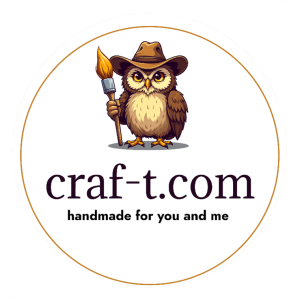The Eco-Friendly Advantages of Choosing Handmade Baby Clothes
Introduction
As sustainability becomes a global priority, many parents are making more conscious choices when it comes to their baby’s clothing. Handmade baby clothes offer a gentle, eco-friendly alternative to mass-produced garments that often contribute to pollution, unethical labor, and harmful textile waste.
Unlike fast fashion, handmade baby clothes are crafted with care, sustainability, and longevity in mind. Choosing these garments means reducing environmental impact while ensuring comfort and safety for your little one.
In this article, we will explore the many eco-friendly benefits of handmade baby clothes, why they are superior to factory-made apparel, and how they contribute to a greener planet for future generations.
1. Sustainable and Ethical Fabric Choices
One of the biggest advantages of handmade baby clothes is that artisans and small businesses prioritize sustainable materials over synthetic and chemical-laden fabrics. Many handmade baby garments are made from:
- Organic cotton – Free from pesticides and genetically modified organisms (GMOs).
- Bamboo fabric – Naturally hypoallergenic and biodegradable.
- Linen and hemp – Extremely durable and require less water to grow.
- Upcycled or recycled fabrics – Giving a second life to high-quality textiles.
These fabrics are kinder to the environment than polyester or synthetic blends, which shed harmful microplastics into waterways during washing. By choosing handmade, you’re ensuring that your baby’s clothes come from sustainable sources that do not damage the planet.
2. Non-Toxic and Chemical-Free for Baby’s Sensitive Skin
Babies have delicate skin that is highly sensitive to chemicals often found in mass-produced clothing. Many fast-fashion brands treat fabrics with:
- Formaldehyde (to prevent wrinkles)
- Synthetic dyes (which can cause rashes and allergies)
- Flame retardants and pesticides (used in non-organic cotton production)
Handmade baby clothes are free from these harsh chemicals. Artisans often use natural plant-based dyes or untreated fabrics that ensure maximum comfort and safety for newborns and toddlers.
For parents who want to protect their children from unnecessary exposure to toxic substances, handmade organic clothing is the safest choice.
3. Lower Carbon Footprint Compared to Mass Production
The fashion industry is one of the largest polluters in the world, with textile factories consuming enormous amounts of water, energy, and chemicals. Fast fashion also contributes to excessive CO₂ emissions due to:
- Long supply chains (fabrics sourced from one country, dyed in another, sewn in a third, and sold globally).
- Heavy machinery production that relies on fossil fuels.
- Wasteful overproduction leading to discarded, unsold stock in landfills.
Handmade baby clothes, on the other hand, are produced in small batches or made-to-order, significantly reducing environmental impact. They support slow fashion principles, meaning every piece is crafted with intention rather than mass-produced in an unsustainable cycle.
By choosing handmade, you’re actively reducing your carbon footprint while supporting ethical production practices.
4. Encouraging Fair Trade and Ethical Labor Practices
Fast fashion is often associated with exploitative labor conditions, including:
- Low wages for garment workers
- Unsafe working environments
- Child labor in textile factories
Handmade baby clothes, however, are typically created by small businesses, independent artisans, or fair-trade cooperatives that ensure fair wages and ethical working conditions. When you buy handmade, you’re supporting real people instead of large corporations that prioritize profit over human rights.
Many handmade clothing brands work directly with artisans, helping preserve traditional skills while ensuring workers receive fair compensation.
5. Durability and Longevity – Less Waste in Landfills
Handmade baby clothes are often made with higher quality craftsmanship and attention to detail, which means they last much longer than factory-made baby garments.
Mass-produced baby clothes often have:
- Weak seams that come apart after a few washes.
- Thin, synthetic fabric that wears out quickly.
- Poor stitching that leads to shape loss.
In contrast, handmade clothes are built to withstand frequent washing and daily wear. Many handmade baby garments are also adjustable or designed to grow with the child, reducing the need for constant replacements.
The longer lifespan of handmade clothing means less waste, helping combat the growing problem of textile pollution.
6. Reducing Fast Fashion’s Contribution to Landfill Waste
Each year, millions of tons of clothing are discarded into landfills. Babies and toddlers outgrow their clothes quickly, leading to frequent disposal of garments that often don’t decompose for decades.
Handmade baby clothes, especially those made from:
✅ Natural fibers (cotton, linen, bamboo)
✅ Biodegradable or compostable materials
✅ Upcycled or repurposed fabrics
Break down naturally when disposed of, unlike synthetic fibers that release harmful toxins into the soil.
By choosing handmade, you’re helping to reduce fashion waste and promote circular economy principles—where clothes are worn, reused, and repurposed rather than thrown away.
7. Customization and Unique Designs
Unlike mass-produced baby clothes that all look the same, handmade garments offer one-of-a-kind designs that can be personalized to suit a baby’s needs. Parents can choose:
- Custom sizing for better fit and comfort.
- Unique embroidery or fabric patterns tailored to their baby’s style.
- Personalized monograms or hand-stitched details.
This level of customization means your baby wears something truly special, rather than a generic piece from a factory.
8. Supporting Small Businesses and Local Artisans
When you buy handmade baby clothes, you’re directly supporting small businesses, independent artisans, and eco-conscious designers instead of large corporations that mass-produce garments.
Supporting these businesses helps:
✔ Keep traditional textile crafts alive.
✔ Boost local economies.
✔ Promote sustainable entrepreneurship.
Your purchase has a meaningful impact, allowing artisans to continue crafting high-quality, eco-friendly baby clothing.
9. Handmade Clothes Can Be Easily Repurposed or Upcycled
Because handmade baby clothes are crafted with durable, high-quality materials, they can be easily:
- Passed down to younger siblings or donated instead of being thrown away.
- Upcycled into new baby accessories (e.g., bibs, blankets, or cloth toys).
- Turned into keepsakes like memory quilts or framed baby outfits.
This circular approach to fashion ensures that clothing is fully utilized rather than wasted, making it a sustainable choice for conscious parents.
10. Encouraging a Sustainable Mindset from an Early Age
By dressing your child in handmade, eco-friendly clothes, you’re instilling important values about:
- Sustainable consumption
- Ethical shopping habits
- The importance of choosing quality over quantity
Raising children with eco-conscious choices helps shape a future generation that values sustainability, responsible production, and mindful living.
Final Thoughts: Why Handmade Baby Clothes Are the Future of Sustainable Fashion
Handmade baby clothes are more than just beautiful and unique—they represent a shift toward responsible consumerism, ethical production, and eco-friendly fashion.
By choosing handmade, you’re making a positive impact by:
✅ Reducing fast fashion waste
✅ Supporting ethical labor practices
✅ Prioritizing safe, chemical-free clothing for babies
✅ Helping small businesses and artisans thrive
As sustainability continues to reshape the fashion industry, handmade baby clothes stand as a beacon of quality, care, and conscious consumption—one little outfit at a time.








